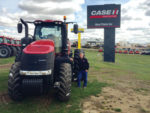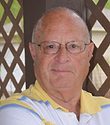Advertise Follow Us
Farm Equipment

View Archived Issues
June Showcase 2016
Volume: 54
Edition: 5
Special Report: You Bought the Store. Now What?
-
Table of Contents
Table of Contents
Special Report: After the Ink DriesAfter the Ink Dries: The First 100 Days Post-Acquisition
Dealers and consultants share their lessons learned on best practices for integrating your company culture into a newly acquired store.Read MoreSpecial Report: After the Ink DriesConsultants Offer ‘Post-Deal’ Insights
Professional management advisors share top tips on how to integrate store cultures, operations and systems on ‘Day 1’ of an acquisition.Read MoreSpecial Report: After the Ink DriesAssimilating an Acquired Dealership: Issues & Missteps
Buying another dealership is the easy part. Integrating it into the overall organization is the bigger challenge.Read MoreSpecial Report: After the Ink DriesOne Dealership’s ‘Acquisition Journal’
New manager Davin Peterson recalls the first few months following an acquisition — in which he was getting to know both parties.Read MoreSpecial Report: After the Ink DriesCultural Integration: Embrace Change From the Get Go
Agriterra Equipment is an ever-growing dealership group that stresses open communication in the days following an acquisition.Read MoreSpecial Report: After the Ink DriesPlan Early, But Have Patience
While Champlain Valley Equipment doesn’t have a script for acquiring another dealership, planning early and addressing challenges as they appear has led to six smooth dealership transitions for the company.Read MoreSpecial Report: After the Ink DriesFocusing on People & Performance Creates a Collaborative Culture
After more than a decade of rapid expansion, North Dakota-based Plains Ag has developed a successful — but still evolving — post-acquisition game plan rooted in honesty, tradition and productivity.Read MoreSpecial Report: After the Ink DriesEvery Acquisition is a ‘Big’ Deal
Dealers may want to downplay the significance of buying another dealership, but each acquisition is meaningful for the customers and employees who are involved.Read MoreSpecial Report: After the Ink DriesIntegrating a New Store: What Makes for a Successful Transition?
Read MoreSpecial Report: After the Ink DriesGetting a Do-Over: What Dealers Would Do Differently After an Acquisition
Read More -
Featured Articles
Featured Articles
Special Report: After the Ink DriesAfter the Ink Dries: The First 100 Days Post-Acquisition
Dealers and consultants share their lessons learned on best practices for integrating your company culture into a newly acquired store.Read More -
Online Extras
Online Extras














